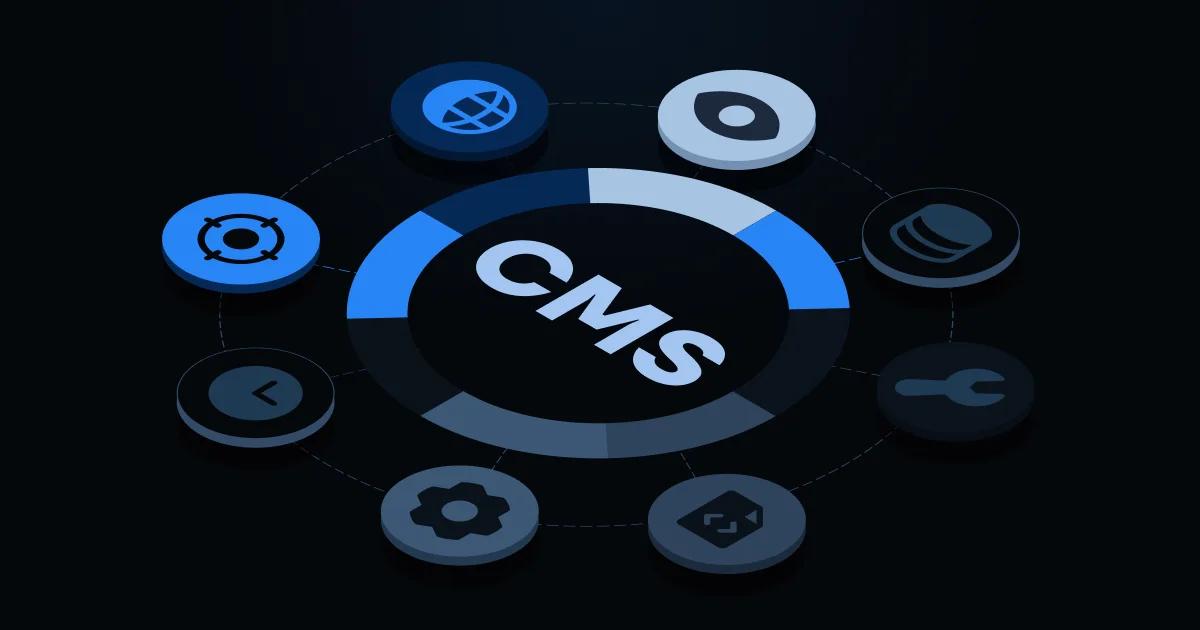With 57% of businesses using a headless approach in 2024, and 39% planning to evaluate headless CMS in the next year, it's worth stacking up this special kind of CMS against the traditional one and looking into their differences and similarities - while focusing on pros and cons of each.
In brief:
- Traditional CMS connects content management and display which makes it simple but less flexible for modern needs.
- Headless CMS separates content and presentation resulting in faster performance and easier multi-channel publishing.
- Traditional CMS works well for straightforward projects, while headless CMS shines in scalability and cross-platform content delivery.
- Choosing the right CMS depends on your project’s complexity, future growth plans, and team’s technical expertise.
What is a Headless CMS?
A headless CMS is a content repository that delivers content via APIs, decoupling the frontend presentation layer from the backend. This separation provides unmatched flexibility, allowing your development team to craft unique digital experiences across multiple channels without being confined to a single tech stack. It’s ideal for enterprises focused on omnichannel strategies and looking to future-proof their content delivery systems.
With a headless CMS, your content creators can focus purely on content creation, while developers can independently build and optimize the frontend. This decoupled approach not only streamlines workflows but also supports agile development practices, ensuring your enterprise can quickly adapt to market changes and technological advancements.
Examples of Headless CMS
Contentful
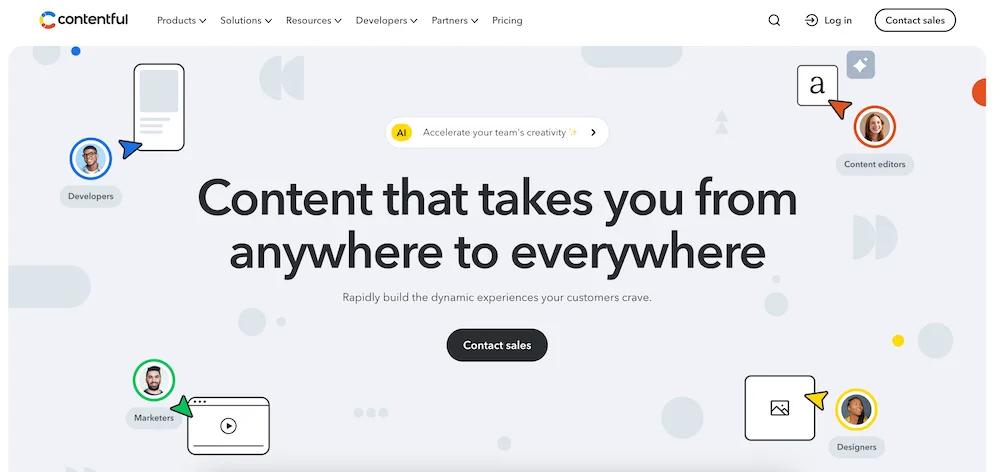
contentful
Contentful provides a flexible content infrastructure. It allows you to create, manage, and distribute content to any platform, making it a strong choice for enterprises needing a robust, scalable solution. If you're looking to integrate Contentful with a custom tech stack, consider Webstacks for seamless implementation.
Strapi
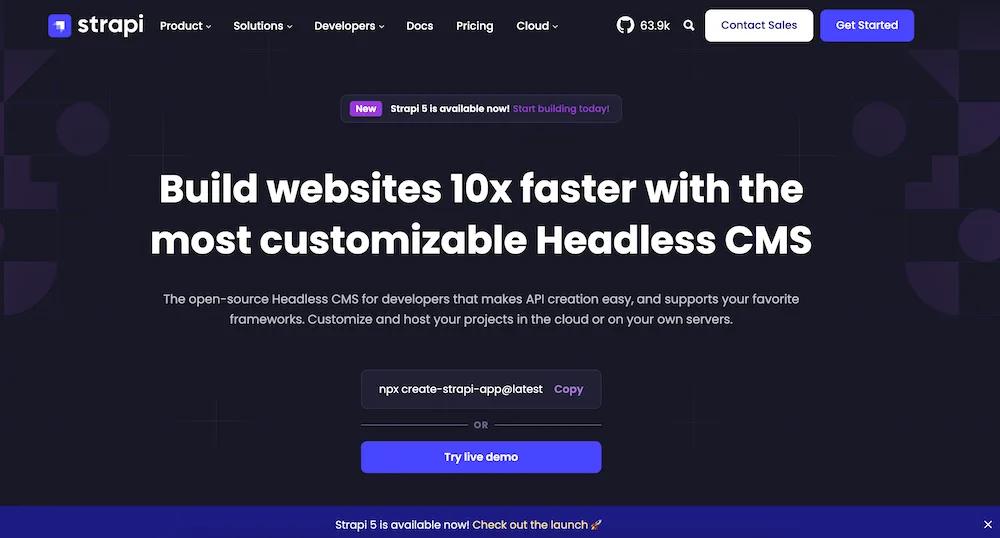
strapi
Strapi is an open-source headless CMS. It offers customizable APIs and a user-friendly admin panel, giving your team the freedom to tailor the system to your specific needs. For a tailored Strapi integration, Webstacks can assist in creating a highly performant solution.
Sanity.io
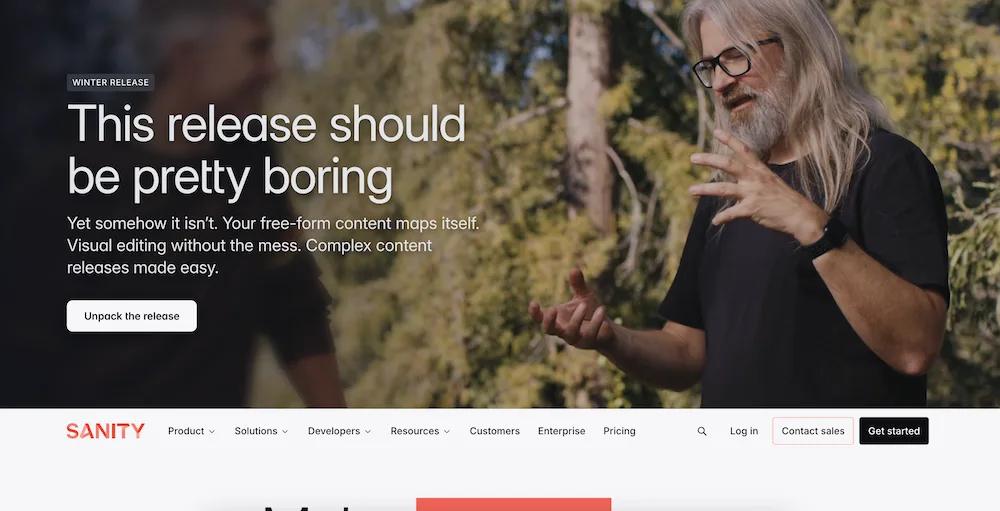
sanity
Sanity.io focuses on real-time collaboration and structured content. It supports various integrations and scalable content management, making it perfect for dynamic enterprise environments.
DatoCMS
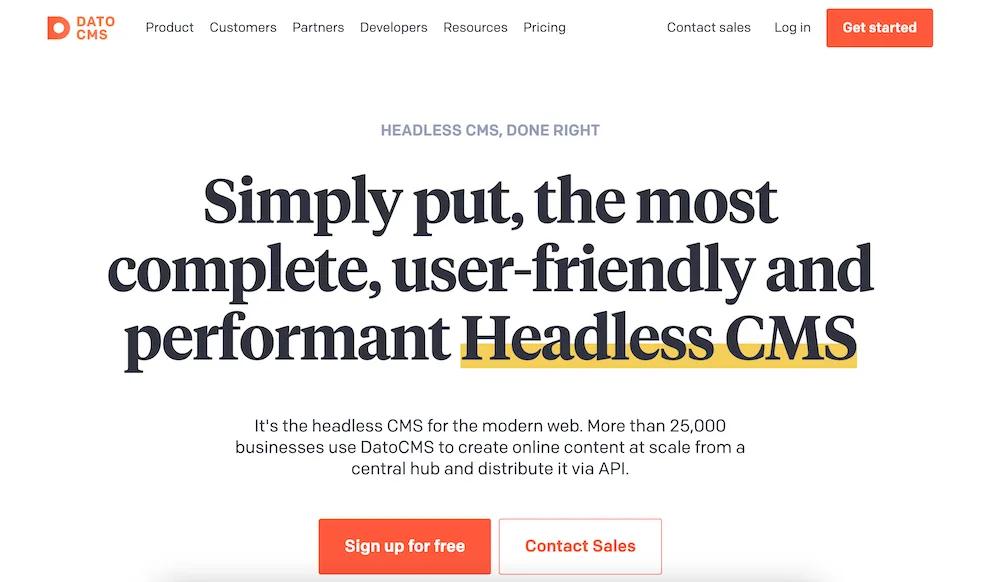
datocms
DatoCMS is another modern headless CMS that offers a flexible and scalable solution for managing content. It provides a user-friendly interface and powerful API capabilities, making it a great choice for enterprises looking to streamline their content workflows.
What is a Traditional CMS?
A traditional CMS tightly couples the frontend and backend, providing a monolithic, all-in-one architecture. This approach simplifies content management and presentation, making it easier for non-technical users to see changes in real-time. It’s a go-to for enterprises that prioritize ease of use and rapid deployment over flexibility and scalability.
Traditional CMS platforms are often favored for their integrated environments, which can reduce the learning curve for teams new to web development. However, as your enterprise grows, the limitations of a monolithic architecture may become more apparent, potentially hindering your ability to scale and innovate.
Examples of Traditional CMS
WordPress
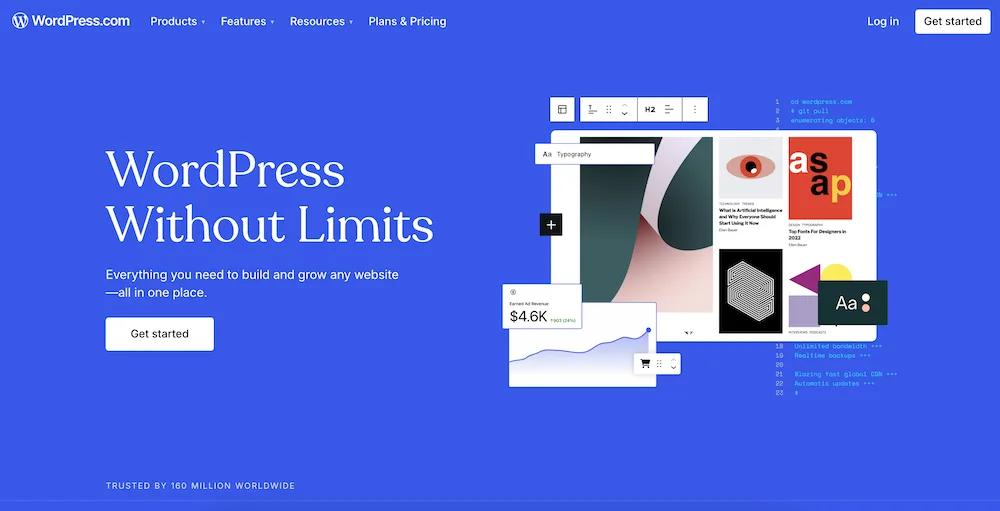
wordpress
WordPress is one of the most popular traditional CMS platforms. It offers a user-friendly interface and a vast library of plugins and themes, making it ideal for users who want to set up a website quickly without extensive technical knowledge. WordPress powers a significant portion of the web, from personal blogs to large corporate sites. For custom WordPress solutions, Webstacks can help create a unique and engaging digital experience.
Drupal
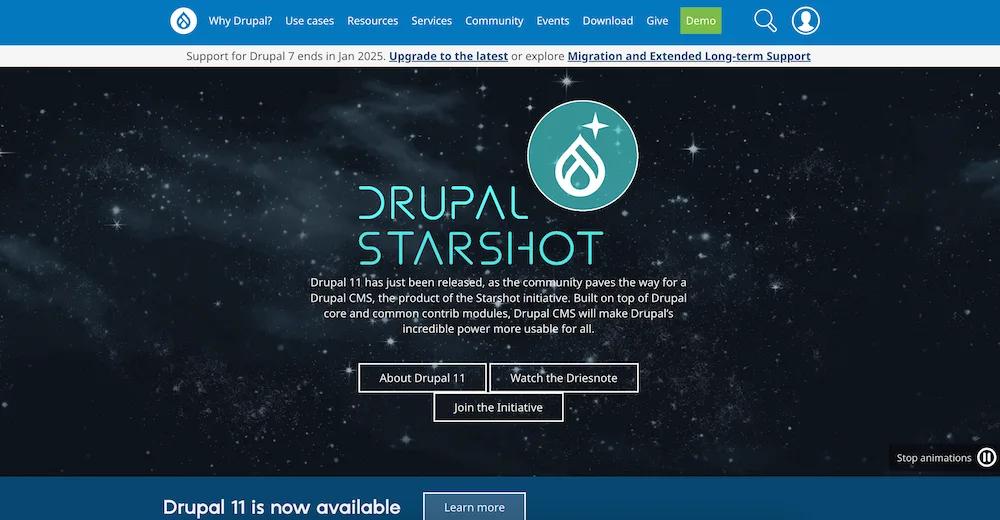
drupal
Drupal is known for its flexibility and scalability. It is a preferred choice for complex websites that require custom content types and advanced user permissions. Drupal's modular architecture allows developers to extend its functionality through a wide range of modules, making it suitable for enterprises that need a robust and customizable solution.
Joomla
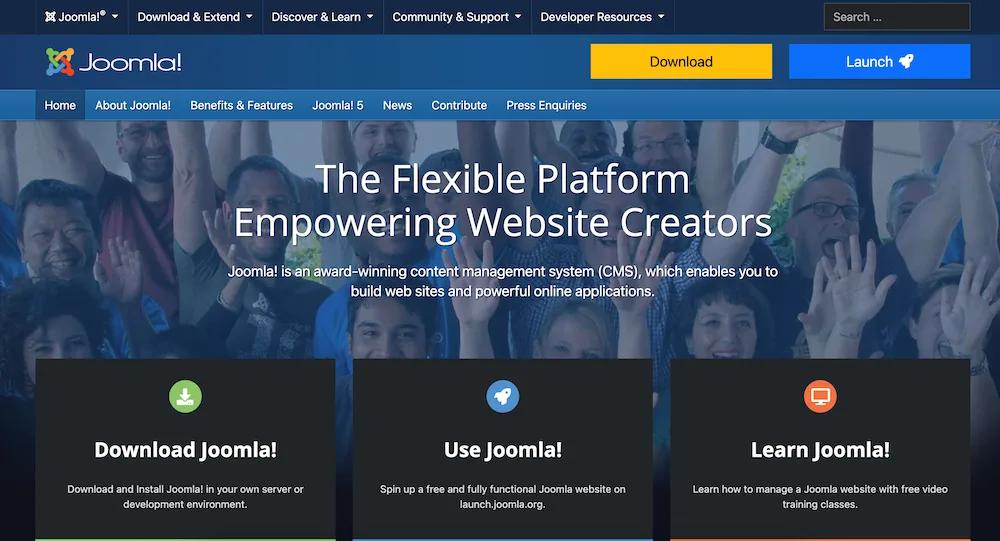
joomla
Joomla strikes a balance between ease of use and flexibility. It offers a range of built-in features and extensions, making it a versatile option for various types of websites. Joomla's community support and documentation help users get the most out of the platform. It is a good choice for users who need more flexibility than WordPress but less complexity than Drupal.
Enterprise CMS Platforms
For a comprehensive comparison, consider exploring the best enterprise CMS platforms to find the right fit for your specific needs.
Key Differences Between Headless and Traditional CMS
Understanding the key differences between headless and traditional CMS platforms is crucial for making an informed decision. Each has its unique strengths and challenges that could impact your enterprise's digital strategy.
Architecture
In a headless CMS, the architecture is decoupled. This means the backend, where content is managed, is separate from the frontend, where content is displayed. You manage content in one place and deliver it to various platforms through APIs. This separation allows for greater flexibility in how and where content is presented.
A traditional CMS, on the other hand, uses a monolithic architecture. The backend and frontend are tightly integrated. You manage content and design within the same system, making it easier to see changes in real-time. This all-in-one approach simplifies the process but limits flexibility.
Content Delivery
With a headless CMS, content delivery happens through APIs. You can push content to any device or platform, whether it’s a website, mobile app, or IoT device. This method supports omnichannel strategies and ensures consistent content across various touchpoints.
Traditional CMS platforms deliver content using page templates. You design and manage content within a predefined structure, which is then rendered as web pages. This approach works well for websites but can be restrictive if you need to deliver content to multiple platforms.
Flexibility and Customization
A headless CMS offers high flexibility and customization. Developers can use any frontend technology to build the user interface, allowing for unique and tailored digital experiences. You can integrate various tools and services to enhance functionality without being tied to a specific tech stack.
Traditional CMS platforms provide customization through themes and plugins. While this allows for some flexibility, you are often limited by the capabilities of the CMS and its ecosystem. Customizing beyond the available options can be challenging and may require significant development effort.
Development
Developers working with a headless CMS enjoy a more modern and streamlined experience. They can choose their preferred programming languages and frameworks, making it easier to build and maintain the frontend. The decoupled nature also supports agile development practices and continuous integration.
In a traditional CMS, developers work within the constraints of the platform. They must use the CMS’s built-in tools and languages, which can limit innovation and slow down development. However, the integrated environment can simplify the learning curve for those new to web development.
Scalability
Scalability is a strong point for headless CMS platforms. Since the backend and frontend are separate, you can scale each independently. This makes it easier to handle increased traffic and content volume without affecting performance. You can also leverage cloud services to further enhance scalability.
Traditional CMS platforms can struggle with scalability. The monolithic architecture means that as your site grows, both the backend and frontend must scale together. This can lead to performance bottlenecks and increased complexity in managing resources. Scaling a traditional CMS often requires significant infrastructure investment and optimization efforts.
Multiple Website Management
For enterprises managing multiple websites, a headless CMS can offer significant advantages. The decoupled architecture allows you to manage content centrally and distribute it across various sites seamlessly. This approach simplifies content updates and ensures consistency across all your digital properties. Traditional CMS platforms also offer multisite capabilities, but they may be limited by the platform's architecture. For more insights, explore managing multiple websites effectively.
5 Benefits of Using a Headless CMS for Enterprises
Transitioning to a headless CMS can offer numerous benefits for your enterprise, from omnichannel content delivery to improved performance and flexibility.
1. Omnichannel Content Delivery
A headless CMS allows you to deliver content across multiple channels seamlessly. Whether you're targeting websites, mobile apps, IoT devices, or digital signage, a headless CMS ensures consistent content delivery. This approach supports your omnichannel strategy by enabling content reuse and reducing the need for duplicate content creation. You can manage all your content in one place and distribute it wherever needed, enhancing your reach and engagement.
2. Improved Performance
Headless CMS platforms offer superior performance and scalability. By decoupling the frontend and backend, you can optimize each independently. This separation allows you to handle increased traffic and content volume without compromising performance. You can leverage modern cloud services to scale your infrastructure efficiently. This means your digital experiences remain fast and responsive, even as your audience grows.
3. Flexibility
With a headless CMS, you gain the freedom to choose any frontend technology. This flexibility allows your developers to use the best tools and frameworks for your project. You can create unique, tailored digital experiences without being constrained by the limitations of a traditional CMS. This approach supports innovation and ensures your digital presence stays ahead of the curve. Your team can experiment with new technologies and integrate them seamlessly into your content strategy.
4. Streamlined Workflows
A headless CMS streamlines your content workflows by separating content creation from presentation. Your content team can focus on producing high-quality content without worrying about how it will be displayed. This separation allows for more efficient collaboration between content creators and developers.
You can implement approval processes, version control, and other workflow enhancements to ensure your content is always up-to-date and accurate. This streamlined approach reduces bottlenecks and speeds up content delivery. For more tips on achieving content at scale, explore efficient content workflows.
5. Future-Proofing
Using a headless CMS helps future-proof your digital experiences. As new devices and platforms emerge, you can easily adapt your content strategy without overhauling your entire system. The API-driven approach ensures your content remains accessible and flexible, regardless of changes in technology. This adaptability means you can quickly respond to market trends and consumer preferences. Your digital presence stays relevant and engaging, ensuring long-term success. For more strategies, learn how to future-proof your website.
Challenges of Implementing a Headless CMS
While the benefits are significant, it's essential to be aware of the challenges that come with implementing a headless CMS. Understanding these hurdles will help you prepare better and mitigate potential risks.
Learning Curve for Non-Technical Users
Implementing a headless CMS introduces a learning curve for non-technical users. Unlike traditional CMS platforms where content creation and management happen within a single interface, a headless CMS separates these tasks. This separation means content creators must adapt to new workflows and tools. Non-technical users may find it challenging to understand how their content will appear across different platforms without a visual editor. Training and support become necessary to help these users navigate the new system effectively. The transition period can slow down content production initially, as users get accustomed to the new processes.
Complex Development
A headless CMS increases development complexity. The decoupled architecture requires developers to build the frontend from scratch, using APIs to fetch and display content. This approach demands a higher level of technical expertise and familiarity with various frontend technologies. Developers must manage multiple components, ensuring they work seamlessly together. The need for custom development can extend project timelines and require more resources. Additionally, maintaining a headless CMS involves ongoing updates and optimizations to both the backend and frontend, adding to the overall complexity. For a comprehensive guide, check out this headless CMS implementation guide.
Integration Cost
Implementing a headless CMS can incur significant costs for infrastructure and integrations. Unlike traditional CMS platforms that offer an all-in-one solution, a headless CMS requires separate hosting for the backend and frontend. This separation can lead to higher hosting costs, especially if you need to scale your infrastructure to handle increased traffic. Integrating various tools and services, such as analytics, marketing automation, and third-party APIs, adds to the expense. These integrations often require custom development and ongoing maintenance, further driving up costs. Enterprises must budget for these additional expenses to ensure a smooth implementation and operation of a headless CMS. For a detailed checklist, refer to this content migration plan.
How to Choose Between a Headless and Traditional CMS
Choosing the right CMS for your enterprise is a critical decision. Here are some factors to consider to help you make the best choice for your organization's needs.
When deciding between a headless CMS and a traditional CMS, you need to evaluate several factors. Each CMS type offers unique benefits and challenges, so understanding your specific needs will guide your decision.
- First, outline your project requirements and goals. Determine if you need a flexible system that can deliver content across multiple platforms. A headless CMS excels in this area by providing content through APIs, making it ideal for omnichannel strategies. If your project involves a straightforward website with minimal integrations, a traditional CMS might suffice. Traditional CMS platforms offer built-in templates and plugins, simplifying the process for less complex projects. For more insights, explore this B2B website strategy.
- Assess your team's skills and resources. A headless CMS requires a higher level of technical expertise. Your developers must be comfortable working with APIs and various frontend technologies. If your team lacks these skills, you might face a steep learning curve. On the other hand, a traditional CMS is more user-friendly for non-technical users. Content creators can manage and publish content without needing extensive technical knowledge. Consider the capabilities of your team and whether you have the resources to support a more complex system.
- Budget and timeline are also critical factors. Implementing a headless CMS can be more expensive due to the need for custom development and separate hosting for the backend and frontend. You must account for ongoing maintenance and potential integration costs. A traditional CMS often has lower upfront costs, with many platforms offering free or low-cost options. However, consider the long-term costs of scaling and maintaining the system. Evaluate your budget constraints and project timeline to determine which CMS aligns with your financial and time resources.
Scalability and Future Needs
Scalability and future needs play a significant role in your decision. A headless CMS offers greater scalability, allowing you to handle increased traffic and content volume without performance issues. This flexibility is essential for growing enterprises that anticipate expanding their digital presence.
Traditional CMS platforms can struggle with scalability, especially as your site grows more complex. Consider your long-term goals and whether you need a system that can adapt to future demands. A headless CMS provides the flexibility to integrate new technologies and platforms as they emerge, ensuring your digital strategy remains agile.
Integration Capabilities
Evaluate the integration capabilities of each CMS. A headless CMS allows seamless integration with various tools and services, enhancing your digital ecosystem. You can connect marketing automation platforms, analytics tools, and other third-party services to streamline your workflows. Traditional CMS platforms also offer integrations, but they may be limited by the platform's architecture. Determine the tools you need to integrate and whether the CMS can support these connections effectively. For more insights, refer to this website replatforming guide.
User Experience
Consider the user experience for both your team and your audience. A headless CMS can deliver a more dynamic and personalized user experience by leveraging modern frontend technologies. This approach allows you to create unique digital experiences that engage your audience. Traditional CMS platforms offer a more straightforward user experience, with built-in templates and themes that simplify content management. Assess the importance of user experience in your project and choose a CMS that aligns with your goals.
Security and Compliance
Security and compliance are vital considerations. A headless CMS can offer enhanced security by isolating the backend from the frontend, reducing the attack surface. You can implement robust security measures and ensure compliance with industry standards. Traditional CMS platforms also provide security features, but they may be more vulnerable to attacks due to their monolithic architecture. Evaluate your security requirements and choose a CMS that meets your standards.
Support
Lastly, consider the support and community available for each CMS. A strong community and reliable support can make a significant difference in your CMS experience. Headless CMS platforms often have active developer communities and extensive documentation, providing valuable resources for troubleshooting and development. Traditional CMS platforms also boast large communities and support networks, offering a wealth of knowledge and assistance. Determine the level of support you need and choose a CMS with a robust community and reliable support options.
For more insights on choosing the right CMS, check out this guide on choosing the right CMS.
Is a Headless CMS the Right Choice for Your Enterprise?
- First, take a close look at your content strategy and the digital channels you use. If your enterprise relies on delivering content across multiple platforms—such as websites, mobile apps, and IoT devices—a headless CMS can streamline this process. Its API-driven approach allows you to manage content centrally and distribute it wherever needed. This ensures consistency and reduces the effort required to maintain content across various channels.
- Next, assess your team's technical capabilities. Implementing a headless CMS requires a higher level of technical expertise compared to traditional CMS platforms. Your developers will need to be proficient in working with APIs and various frontend technologies. If your team has the necessary skills, a headless CMS can offer greater flexibility and customization options. However, if your team lacks these skills, you may face a steep learning curve and potential delays in project timelines.
- Think about your long-term scalability and flexibility needs. A headless CMS provides a scalable solution that can grow with your enterprise. Its decoupled architecture allows you to handle increased traffic and content volume without compromising performance. Additionally, the flexibility to choose any frontend technology ensures that you can adapt to future changes and innovations. This makes a headless CMS a future-proof choice for enterprises looking to stay ahead in the digital landscape. For more insights, explore the benefits of a composable CMS.
- Finally, weigh the benefits of a headless CMS against the implementation challenges. While a headless CMS offers many advantages, such as omnichannel content delivery and improved performance, it also comes with challenges like increased development complexity and potential costs for infrastructure and integrations. Carefully consider whether the benefits outweigh these challenges for your specific use case. If the advantages align with your enterprise's goals and capabilities, a headless CMS could be the right choice for you.
Our Take on Headless CMS vs Traditional CMS
The choice between headless and traditional CMS architectures hinges on an organization's specific needs and future aspirations.
Traditional CMS platforms offer an all-in-one solution that integrates content management with presentation, which can be advantageous for straightforward projects requiring minimal customization. However, as businesses aim to deliver content across multiple channels and devices, the limitations of traditional systems become obvious.
Headless CMS architectures, by decoupling the backend from the frontend, provide the flexibility to adapt to various platforms and technologies. This separation not only enhances scalability but also allows for more tailored user experiences. Your business should assess your content delivery requirements and technical capabilities to determine the most suitable CMS approach.
Ready to transform your digital presence? See the Webstacks difference: schedule a brief discovery call today. Visit Webstacks to get started.

